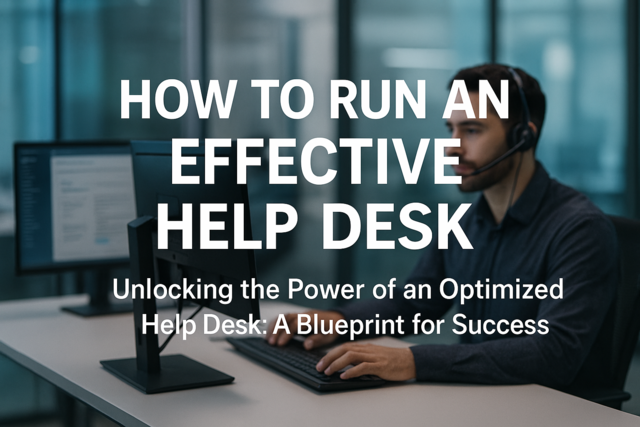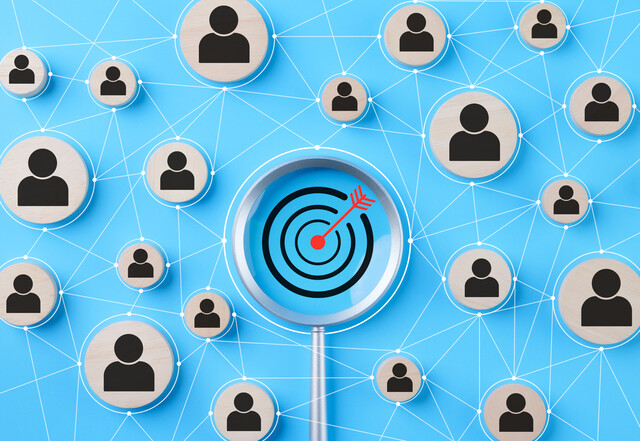Selling is a key part of the product life cycle, as is how to price a product. Both aspects are essential to the marketing strategy, and successful marketers must have a firm understanding how both selling and pricing strategy affect their products and the market as a whole.
Selling
There is traditional selling and relationship selling, and each have their advantages and disadvantages. Traditional selling, also called transactional selling, is the basic selling done when the only goal is making a sale.
Imagine going to a gas station, and running in to grab a soda and a bag of chips. When you go to pay, the cashier rings you up, you pay and leave. That's it.
With relationship selling, both the buyer's and seller's needs are being met. The seller doesn't try to force a sale, and in turn, gains the trust of the buyer.
This type of selling will result in long-term relationships between both the buyer and seller, in which mutual trust has been established. Relationship selling isn't just about the sale, but about the process, before and after, the sale.
The greatest advantage of this type of selling is forming lasting relationships with customers that are based in trust and loyalty. This type of customer is essential, since finding new customers is 10 times more expensive than retaining an existing one.
Key Terms!
Traditional Selling
Relationship Selling
The Selling Process
Before we discuss the steps in the selling process, you must know a key part of this process is having the best salespeople possible. They should be motivated and knowledgeable, and know the products backwards and forwards. If possible, they should also understand buyer behavior and motives.
There are eight steps in the selling process.
1. Pre-Sale Preparation
2. Prospecting
3. Approaching
4. Presentation
5. Demonstration
6. Handling Objections
7. Closing the Sale
8. Post-Sale Follow-Up
1. Pre-Sale Preparation:
This first step is selecting and hiring the best salespeople a company can afford. Training and onboarding is a key step to ensure the employee understands the product and how it relates to the market in general. They should also know of their competitors, and be able to convey how their product is better than the competitor.
2. Prospecting:
This step requires the company to seek our prospective buyers who either need or want the product, and are in a position to buy it. Customers can be located through existing customers, observation, social media, etc.
3. Approaching:
Before calling on potential buyers, the salespeople must learn as much about them as possible. Knowing their habits and needs will allow the salesperson to better meet the needs of the customer. Once this information has been learned, the salesperson should approach the customer and introduce himself. The salesperson should always approach with a smile, and be as welcoming as possible. Remember, you can't change a first impression.
Think!
Have you ever been approached by a salesperson and their attitude cost the store a sale?
What could the salesperson or manager have done to save the sale?
4. Presentation:
This step requires the salesperson to know how to present the product and be able to describe its features and specifications. The presentation should match the attitude of the customer so the salesperson can hold the customers' attention.
5. Demonstration:
The salesperson should be prepared to demonstrate the product if possible. He should not hurry or rush the customer, which could leave a bad taste in the customer's mouth. The salesperson should not try to impress the customer, just be honest and respectable. Suggesting the customer try the product is a great idea.
6. Handling objections:
Some customers will balk or question the product. They might question the price, and be concerned they can't afford it. The salesperson must be able to clear all doubts in a calm way. Good ways to win over a buyer is with testimonials and guarantees. The salesperson must convince the customer that he is getting his money's worth with this product. This is when the salesperson should discuss competitors, and why his product is superior to the competitor.
Again, the salesperson should never lose her temper or her patience. If the customer doesn't buy, the salesperson must let the customer walk away. As detailed in earlier chapters, the customer is always right.
Think!
Have you ever become angry with a salesperson?
What did they do to save the sale?
7. Closing the sale:
This is it. Closing the sale. This might sound easy, but if the customer isn't handled correctly, the sale could be lost. The salesperson should always allow the customer to feel that he made the decision to buy the product on his own. In some instances, a price adjustment is needed, but this is only the case in certain industries.
As the sale progresses, the salesman should show the same interest as when the customer walked in the door. The sale should be closed in a kind way, so that the customer wants to return to the store. Once the sale is complete, the product should be adequately packed and/or packaged.
At this point, the salesperson can suggest complementary products. For instance, if a man buys a suit, the salesperson could suggest a tie, socks, or dress shirt. This is called "additional sales."
With the advent of technology, it is possible to get e-mail addresses from buyers, which will enable the seller to e-mail the existing customer to let them know of sales, promotions, or to send them coupons or discounts.
8. Post-sale follow-Up:
After the sale, and once the customer has left the establishment, the company must follow up and see if any improvements can be made. They also want to make sure the customer is satisfied with the product, and knows how to use it. This is a great way to keep repeat customers.
Many companies request their customers to fill out a questionnaire post-sale, and this can be a great way to gather information and improve services.
Pricing Strategy
Pricing a product is central to the success of a business. Price too high, and you lose customers, price too low, and you lose profits. It is essential the company prices the product at what the market can bear, while also making the company a profit.
There are three main avenues to price strategy, and they are as follows:
1. Cost-Based Pricing � With this approach the price is determined by taking the cost of the product, and adding a profit on top of that.
2. Customer-Based Pricing � With this approach the price is decided by what a company believes a customer will pay.
3. Competitor-Based Pricing � With this approach the price is determined based on what competitors are charging.
Key Terms!
Cost-Based Pricing
Customer-Based Pricing
Competitor-Based Pricing
Let's look at each approach:
1. Cost-Based Pricing
This method involves pricing a product using the cost of the product and adding a fixed amount, or a percentage, on top. This is an older method, and not the best pricing strategy; however, it is still commonly used.
For the customer, he doesn't know (or care) what a product costs to make. All he cares about is the final price, and if he believes he is getting a bargain, that is all he needs.
Cost-Plus Pricing, also known as "Mark-Up" pricing, is when a retailer wants to know how much margin he is making on each sale. With this approach, the retailer knows that his costs are being covered. The main disadvantage of this is that the seller might have prices that are not competitive.
The main advantage is that the prices are easy to calculate. If a blanket mark-up percentage is used, the company can easily gauge its overall profit margin.
Customer-Based Pricing
There are several types of customer-based pricing. They are:
1. Penetration Pricing
2. Price Skimming
3. Loss Leaders
4. Predatory Pricing
5. Psychological Pricing
Penetration Pricing
How many times have you seen a sign that offers a "Special Introductory Offer?" It gets your attention quickly, doesn't it? This is a perfect example of penetration pricing. The goal of this pricing strategy is to increase market share for the product, and once that has been achieved, a new pricing strategy can be initiated.
Usually with penetration pricing a low starting price is used in order to attract new customers. If the marketing objective is to increase market share, this is the pricing strategy used.
This method will result in lower profits, but will make it up in increased sales and market visibility. And having a large market visibility is a huge benefit, so the temporary pricing strategy is worth it. Once a company has brought in enough new sales, it can switch to a more profitable pricing strategy.
One might find penetration pricing used for a new product, or a product that is difficult to differentiate from other similar products.
Think!
Have you ever purchased a product using penetration pricing?
If so, what?
Price Skimming
This strategy sets a high price before competitors are able to enter the market. This method is used when a new product comes to market with little or no competition. This type of product is often purchased by "early adopters", such as Apple's iPhone. Consumers who love Apple products will buy even if the price is high.
This method can face some challenges. Price skimming cannot last for very long, as competitors will enter the market, forcing the original product to lower its prices. In addition, with price skimming, the company might slow down the demand for the product.
For example, the Apple Watch was released and immediately sold out, even models that cost $10,000. Once the original order sold out, it was a six- to eight-week wait for one. During this period, competitors could be developing a competing product to challenge the iWatch.
Loss Leaders
Loss leaders are usually used in sales promotions. Loss leaders are priced below cost, in an effort to attract new customers, hoping they will buy additional products. Bu is this a successful strategy?
Pricing is the most flexible aspect of the marketing mix. If a company prices a product lower than its competitors, it can attract new customers and retain existing ones. However, customers could take advantage of this pricing, and purchase several products, and not buy any additional products that are not loss leaders.
Loss leader pricing is a short-term method that should only be used for a few products at any one time. Customers will figure out what is going on and take advantage of he strategy.
Predatory Pricing
First, this pricing strategy can be illegal and involves setting prices deliberately low in order to freeze out a competitor. Even if the product is free, or sold as a loss leader, the strategy can lead to anti-trust issues.
Psychological Pricing
Ever wondered why a pair of socks is $4.99? Why not just sell them for an even $5? This is psychological pricing. A customer will have perceived price barriers that will prevent them from paying $5, but they have no problem paying $4. Seeing $4.99 mentally registers as $4, and it is often a very successful technique.
The goal of this strategy is to make a customer believe they are buying a product for cheaper than it actually is. This strategy is best for customers looking for a good value.
You will notice that most big-box stores and retailers use this pricing strategy, alongside other strategies.
Competitor-Based Pricing
If a product has a great deal of competition, a company might price their product accordingly. Many customers will buy from whatever seller has the cheapest price. In a competitive market, companies cannot set their prices above their competitors, as they will lose sales. These companies use "going-rate" pricing, which is how it sounds, pricing is based on whatever the going rate is in the current market.
One advantage of using this pricing strategy is that pricing will be the same with competitors, so pricing shouldn't be too much of a disadvantage. But because the pricing lowers margins, the company will need to find other ways to attract customers.
The strategy a company chooses will change. The strategy they start with could change several different times. It is key that the marketers and management stay on top of the market so they can react and change the strategy when needed.
























